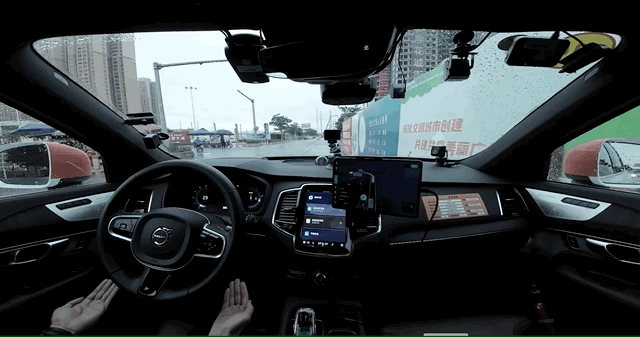Leveraging years of expertise in the autonomous driving sector and serving a global clientele, maadaa.ai proudly presents our new case study series, “Towards BEV+Transformer based Autonomous Driving”. This series aims to explore and discuss the latest advancements in the autonomous driving industry, sharing insights and case studies that reflect our experiences.
As a premier provider of AI data services, maadaa.ai serves a wide range of autonomous driving scenarios. Our auto-driving data services have spanned from 2D to 3D and point cloud technologies. Recently, maadaa.ai announced the MaidX Auto-4D auto-annotation engine supporting BEV multi-sensor fusion data.
If you missed our first case study in this series, please read:
- Towards BEV+Transformer Based Autonomous Driving — Case Study On Baidu-Geely Collaboration (Part 1)
- Towards BEV+Transformer Based Autonomous Driving — Case Study On Baidu-Geely Collaboration (Part 2)
In the second case study of our series, we will focus on Robotaxi in China, the review, the respective technologies, and the important factors for Robotaxi.
Stay tuned with maadaa.ai as we journey through the exciting world of autonomous driving.
1. Current Status Of Robotaxi in China
Robotaxis, also known as driverless taxis, is accompanied by self-driving technology.
Currently, Chinese companies involved in the development of driverless taxis include Baidu, pony.ai, DDT, WeRide, deeproute.ai, T3go, SAIC, etc.
As of 2023, there are already at least 40 cities in China that have adopted driverless management policies and implementation rules, including the biggest cities like Beijing, Shanghai, Guangzhou and Shenzhen.
And more cities are expected to run Robotaxis in the near future.
Yet, the tests aren’t citywide.
The Robotaxis can only operate in certain areas. For instance, the Yizhuang area in Beijing, Jiading District in Shanghai, the Qianhai Development Zone in Shenzhen, and Jiangsu Software Park in Nanjing will soon open for Robotaxis.
This is because these vehicles are still in the development stage and require extensive data to improve safety, performance and driving experience.
Additionally, CICC expects the global market size of Robotaxi to exceed $2 trillion by 2030, far exceeding the online car market.
Automotive consultancy service IHS Markit also predicts that the total market size of shared mobility in China will reach 2.25 trillion yuan by 2030, of which Robotaxi will account for 60 percent, or 1.3 trillion yuan.

2. Experiences and Reviews of Chinese Robotaxis
First, let’s take a look at driverless taxis in China’s capital — Beijing.
Through Baidu’s Apollo Go and Pony.ai’s PonyPilot+ apps, users can request a Robotaxi without a driver inside, and the process is basically the same as the operation of ordinary taxi software.
Compared with regular taxis, which can freely choose where to get in and out, in the driverless taxi software, the map shows the predetermined get-in and out points. In other words, you can only get in and out at a fixed location.
However, as more driverless taxis become available and cover a wider range of areas, such problems will continue to improve.
In Yizhuang, PonyPilot+ passengers must complete their first order before they can book a fully unmanned taxi. Apollo Go is only open to fully unmanned Robotaxi in the Shougang Park campus in Beijing’s western suburbs.
An Internet contributor said the Apollo Go will automatically maneuver through intersections and on straight roads. The scenarios in which the safety officer would intervene humanely include pulling over, honking, changing lanes, and yelling at the car next to him.
For instance, one paasenger said the Apollo Go stopped twice in the middle of the road and failed to successfully complete the parking maneuver. Ultimately, the safety officer had to manually intervene and complete the task of pulling over.
Overall, Baidu’s Apollo Go performs well in starting, turning left, and changing lanes, and the vehicle runs smoothly.
In addition, for the fully unmanned Apollo Go, remote safety officers at Baidu’s Apollo Park monitor driving conditions and can take over the vehicle from the cloud in extreme situations, such as traffic control.
For PonyPilot+, a passenger said that the greatest feeling is stability, stable starting, stable left turning, stable lane changing and stable braking.
However, some people claim that the driving strategy of the PonyPilot+ Robotaxi is also on the conservative side. For example, when turning right with a non-motorized vehicle in front, it doesn’t overtake, but follows behind and drives slowly.

Next, let’s take a look at how DDT’s Robotaxis performs in Shanghai.
During the experience, DDT’s Robotaxis driving strategy is conservative, driving according to the speed limit on city roads, not changing lanes at will, and giving priority to others.
It can automatically detect the degree of congestion in the lanes and change lanes in time to improve efficiency. At the same time, it ensures the safety of other road users.
The overall experience is quite smooth.
In addition, It is worth mentioning that DDT’s Robotaxi provides rich information on the screen, with the vehicle as the center of the display area, and the surrounding environment is reflected on the screen in real time.


(In the next article on this topic, we will explore the respective technologies behind robotaxi brands and Crucial Factors for Robotaxis. Please Stay tuned!)
For more information, please visit: Autonomous Driving
KEYWORDS: Autonomous Driving, AI data services, Robotaxi in China, Driverless taxis, Baidu’s Apollo Go, Pony.ai’s PonyPilot+, Autonomous Driving case studies, Auto-driving data services, Autonomous driving technologies, MaidX Auto-4D auto-annotation engine
To read more from this series, please click the link below.
Towards BEV+Transformer based Autonomous Driving — Case Study on Chinese Robotaxi (Part 2)
Further Reading:
- Towards BEV+Transformer Based Autonomous Driving — Case Study On Baidu-Geely Collaboration (Part 1)
- Towards BEV+Transformer Based Autonomous Driving — Case Study On Baidu-Geely Collaboration (Part 2)
- Towards BEV+Transformer based Autonomous Driving – Case Study on Baidu-Geely Collaboration | Video
- BEV+Transformer: Next Generation of Autonomous Vehicles and Data Challenges?
- Towards BEV+Transformer based Autonomous Driving — Case Study on Chinese Robotaxi (Part 1)
- Towards BEV+Transformer based Autonomous Driving — Case Study on Chinese Robotaxi (Part 2)



